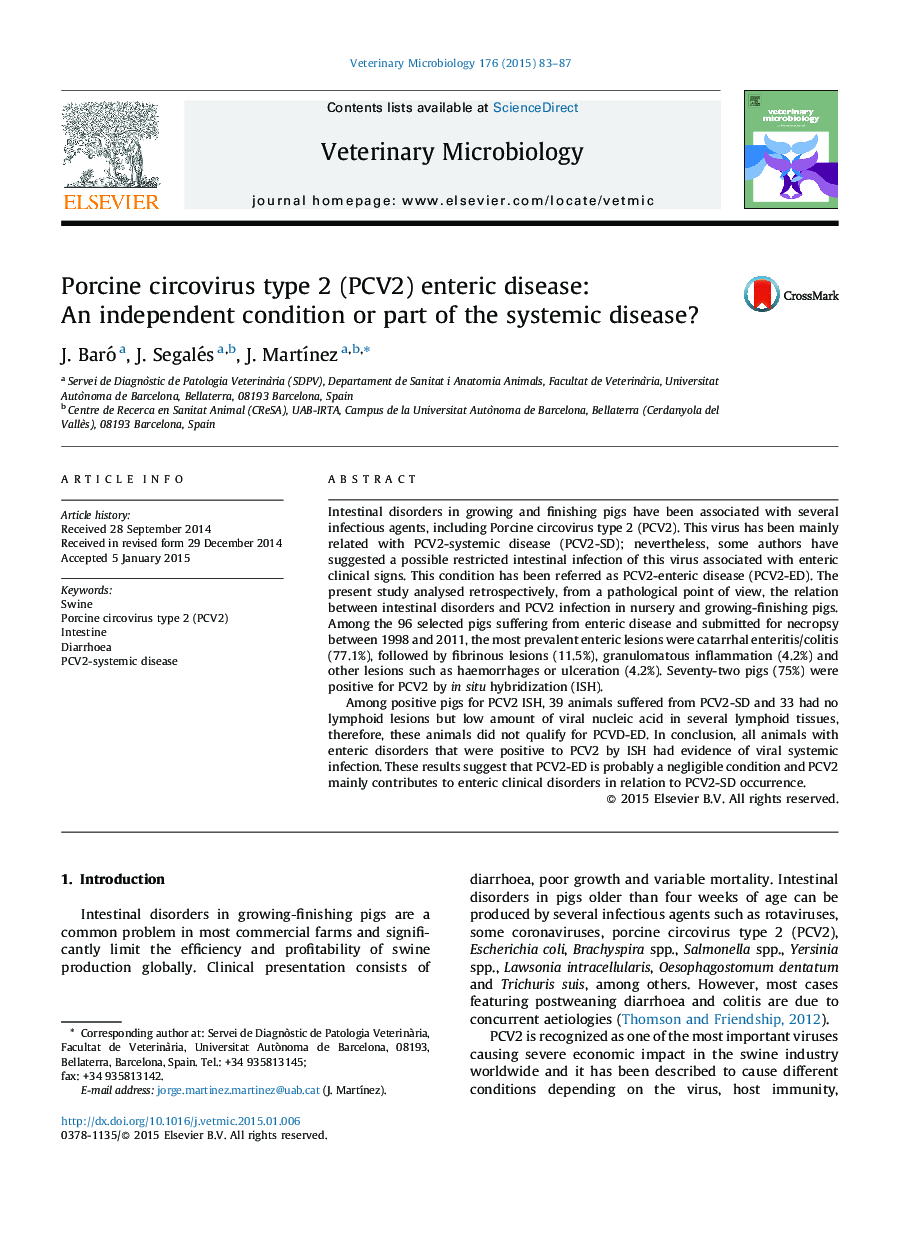| Article ID | Journal | Published Year | Pages | File Type |
|---|---|---|---|---|
| 5800101 | Veterinary Microbiology | 2015 | 5 Pages |
â¢We performed a retrospective study of pig necropsy cases with diarrhoea.â¢We found a high prevalence of PCV2 infection in nursery and growing-finishing pigs.â¢Cases where PCV2 was present corresponded to a PCV2 systemic infection.â¢Cases that could be categorized in the group of PCV2 enteric disease were non-existent.
Intestinal disorders in growing and finishing pigs have been associated with several infectious agents, including Porcine circovirus type 2 (PCV2). This virus has been mainly related with PCV2-systemic disease (PCV2-SD); nevertheless, some authors have suggested a possible restricted intestinal infection of this virus associated with enteric clinical signs. This condition has been referred as PCV2-enteric disease (PCV2-ED). The present study analysed retrospectively, from a pathological point of view, the relation between intestinal disorders and PCV2 infection in nursery and growing-finishing pigs. Among the 96 selected pigs suffering from enteric disease and submitted for necropsy between 1998 and 2011, the most prevalent enteric lesions were catarrhal enteritis/colitis (77.1%), followed by fibrinous lesions (11.5%), granulomatous inflammation (4.2%) and other lesions such as haemorrhages or ulceration (4.2%). Seventy-two pigs (75%) were positive for PCV2 by in situ hybridization (ISH).Among positive pigs for PCV2 ISH, 39 animals suffered from PCV2-SD and 33 had no lymphoid lesions but low amount of viral nucleic acid in several lymphoid tissues, therefore, these animals did not qualify for PCVD-ED. In conclusion, all animals with enteric disorders that were positive to PCV2 by ISH had evidence of viral systemic infection. These results suggest that PCV2-ED is probably a negligible condition and PCV2 mainly contributes to enteric clinical disorders in relation to PCV2-SD occurrence.
